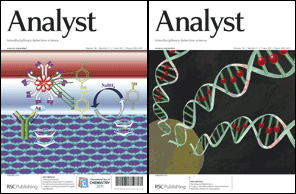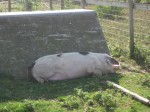Issue 11 of 2011 is now available online – and work from China is highlighted on both covers.
The front cover features the work of Dianping Tang, Guonan Chen and colleagues of Fuzhou University. They report on a novel, enzyme-free amperometric immunoassay of biomarkers with sensitive enhancement which has been designed by using gold nanoflower-labeled detection antibodies.
A graphene-based Au(111) platform for electrochemical biosensing based catalytic recycling of products on gold nanoflowers
Bingqian Liu, Dianping Tang, Juan Tang, Biling Su, Qunfang Li and Guonan Chen
Analyst, 2011, 136, 2218-2220
DOI: 10.1039/C0AN00921K
On the inside front cover, work by Xiaohong Li and He Gong of Beijing Normal University on the use of Y-type, C-rich ds-DNA as a sensing probe for the detection of Ag by electrochemical impedance spectroscopy.
Y-type, C-rich DNA probe for electrochemical detection of silver ion and cysteine
He Gong and Xiaohong Li
Analyst, 2011, 136, 2242-2246
DOI: 10.1039/C1AN15159B
Both these papers are free for the next 6 weeks so please do take a look.















